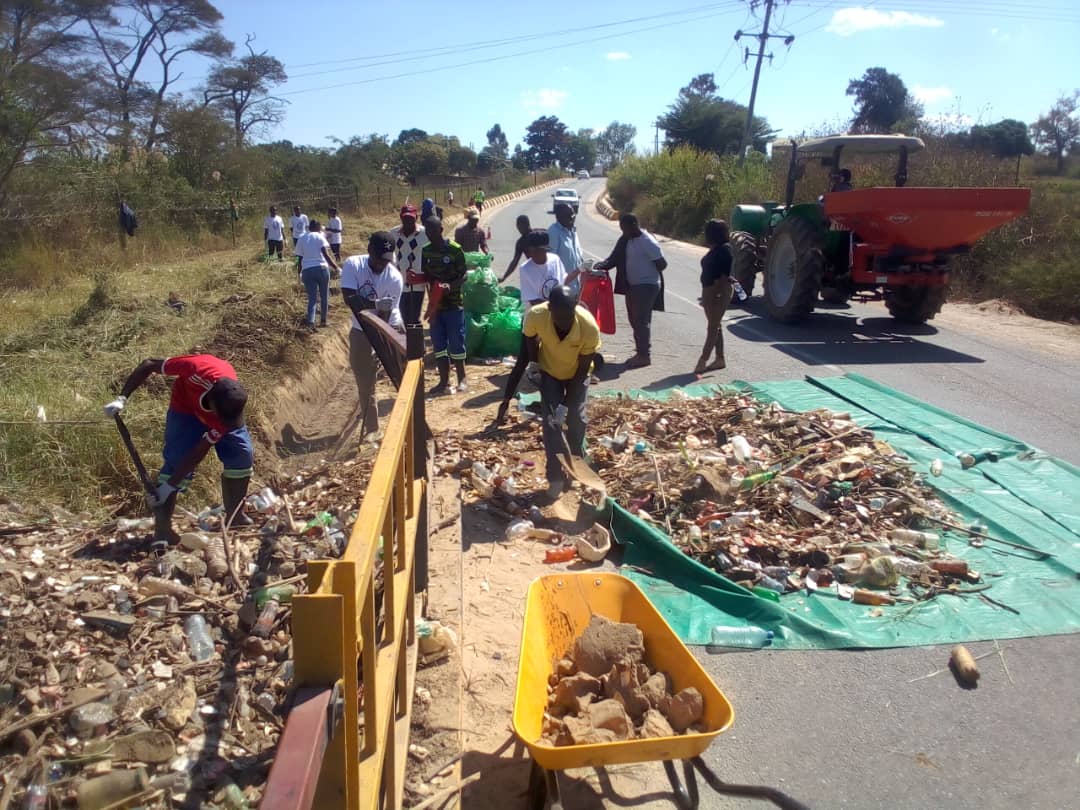Plastic Pollution: The Clean-Up
When you think of Africa, the images that come to mind could hardly be more different: the giant dunes of the deserts, the dense green of the rainforest, the vast plains of the savannah. Magnificent ecosystems, protected in extensive national parks and reserves. But also: poverty in many communities, thronging people in the overcrowded big cities, inadequately equipped schools (or the lack of them) and litter by the side of the road everywhere. All these very different images of Africa are interconnected and interdependent.
Reducing waste, for example, would improve the quality of life in communities and keep national parks clean. And that is exactly why GMFER, Mizu Eco-Care and Eco-Rising Zambia launched the BEAT(ing) PLASTIC POLLUTION project on 5 June, International Environment Day.

The Ngwerere River gushes from its source in Lusaka, Zambia’s capital. It flows past many of the more than 2 million inhabitants, through communities and city districts, past various factories and leaves Lusaka polluted and loaded with waste and debris. It no longer gushes – how could it, with all the junk clogging up the waterway? Again and again, the Ngwerere has to overcome blockades made of countless plastic bottles, plastic bags and broken objects. Plant material gets stuck on old, shoes, rubbish bags get caught in broken branches, debris and factory waste form walls that try to stop the Ngwerere. Because of these blockages, flooding occurs again and again during the rainy season. People lose not only their homes but also the land they cultivate, which is their source of food.
Then, when the Ngwerere has finally made its way through all the junk, it confluences the Chongwe River and unites not only its water with it but also its filth and waste. The Chongwe picks up its way in a south-easterly direction through Zambia until it finally reaches the Zambezi Valley. There, it dumps the waste from the Ngwerere, along with other debris, into the Lower Zambezi National Park and, of course, into the mighty Zambezi itself, which then transports the waste to even more villages and protected areas.
The Ngewerere is one of the two main tributaries of the Chongwe and therefore also one of the main polluters. So GMFER, Mizu Eco-Care and Eco-Rising Zambia raised funds and organised a huge clean-up together with the Chongwe Town Council and the Lusaka City Council. Upstream and downstream, people were busy collecting rubbish from the river, putting huge amounts of plastic bottles into trash bags, cutting and removing bulky branches and even tree trunks that were blocking the Ngwerere. But this mammoth event on World Environment Day is not enough: the river is to be cleaned regularly from now on, because the people in the communities and cities depend on it, as do the animals and plants in the national parks in the south of the country. What is needed is a rethinking, an awareness of the consequences of pollution, information and education about it.
Every problem has a solution, every solution needs support.
The problems we face are urgent, complicated, and resistant to change. Real solutions demand creativity, hard work, and involvement from people like you.

Stay in the know.
Be ready to act.
To keep up to date with our latest news, events, marches,
campaigns and fundraising activities.
